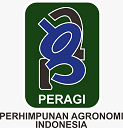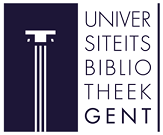Identification and Distribution of Damage Intensity Caused by Sanurus spp. on Cashew Plants in East Flores Regency, Indonesia
Abstract
Cashew is one of Indonesia's leading commodities as an exporting country because it has a positive trade specialization index. The main pest of cashew plants that affects production and can cause crop failure is the Cashew Planthopper (WPM). Cashew Planthopper has several species. Therefore, monitoring is needed to determine the types of WPM in the field and their distribution areas on the mainland of East Flores Regency. This study was conducted from May 2024 to July 2024 by directly capturing WPM imago. The results of a survey of cashew plantation locations in East Flores Regency, 5 locations were determined with high levels of attack due to WPM, which caused crop failure, namely: Ile Mandiri District, Lewolema District, Tanjung Bunga District, Titehena District, and Demon Pagong District. The trapped WPM were then identified by looking at the characteristics of the wings, thorax, and abdomen. The identification results obtained 2 types of WPM from the genus Sanurus, namely, Sanurus flavovenosus and Sanurus indecora. The distribution area of the attack and the level of damage to Sanurus from each district have different intensities with different levels of damage, namely the intensity of heavy damage in red is in Titehena District 53.04%, the intensity of moderate damage in yellow is in Lewolema District 20.65%, Ile Mandiri District 36.91% and Demon Pagong District 36.94% while the intensity of light damage in green is in Tanjung Bunga District 0.55%.
Keywords
Full Text:
PDFReferences
Apriyadi, Rion, Riska Yuni Marlinda, Sitti Nurul Aini, Gigih Ibnu Prayoga. 2023. The Intensity of New Pest Attacks Spodoptera Frugiperda J . E . Smith on Corn Plantation in Mendo Barat District, Bangka Regency. “AGROSAINSTEK” Jurnal Ilmu Dan Teknologi Pertanian 7(2): 79–88.
Astuti Y., Daniati C., Nuningtyas E. 2018. “Penerapan Pht Pada Tanaman Jambu Mete. Buku Pedoman Penerapan Pht Pada Tanaman Jambu Mete, 41.” Buku Pedoman Penerapan Pht Pada Tanaman Jambu Mete: 41.
Awaludin, Muhammad Botek, Marsuki Iswandi, and Siska Efendi. 2023. “Inventarisasi Dan Peta Sebaran Hama Dan Penyakit Pada Empat Komoditi Unggulan Perkebunan Di Kabupaten Buton, Provinsi Sulawesi Tenggara.” Jurnal Riset Perkebunan 4(1): 1–13. doi:10.25077/jrp.4.1.1-13.2023.
Dima, A. O. (2023). A Struktur Komunitas Serangga Pengunjung pada Perkebunan Jambu Mete (Anacardium occidentale L.) di Desa Pariti Kabupaten Kupang. Indigenous Biologi: Jurnal Pendidikan dan Sains Biologi, 6(2), 63-78. doi: https://doi.org/10.33323/indigenous.v6i2.376
Ditjenbun. 2017. “Statistik Perkebunan Indonesia 2016-2018. In Jambu Mete /Cashewnut. Sekretariat Direktorat Jenderal Perkebunan, Kementerian Pertanian.” Statistik Perkebunan Indonesia 2016-2018 (December 2015).
Ditjenbun. 2020. “Statistik Perkebunan Indonesia (Mete), The Crop Estate Statistics of Indonesia (Cloves) 2018-2020.” Statistik Perkebunan Indonesia 2018-2020: 34.
Jihadi, A, B Supeno, Dan Thei, Amrul Jihadi, Bambang Supeno, Ruth Stella, and Petrunela Thei. 2023. “Identifikasi Hama Wereng Pada Tanaman Mangga (Mangifera Indica L.) di Kabupaten Lombok Utara Identification of Leafhopper on Mango (Mangifera Indica L.) in North Lombok District .” Agroteksos 33(2): 458–59.
Karmawati, Elena. 2008. “Perkembangan Jambu Mete Dan Strategi Pengendalian Hama Utamanya.” Perspektif 7(2): 102–12.
Leatemia, J. Audrey, and Ria Y. Rumthe. 2011. “Studi Kerusakan Akibat Serangan Hama Pada Tanaman Pangan Di Kecamatan Bula, Kabupaten Seram Bagian Timur, Provinsi Maluku.” Jurnal Agroforestri VI(1): 52–56.
Limbu, U. N., Bao, A. P., & Lea, V. C. O. (2024). Sebaran Gejala Serangan Hama pada Tanaman Kakao (Theobroma cacao L.) di Kecamatan Ende Kabupaten Ende Nusa Tenggara Timur. Jurnal Ilmu Pertanian Tropis, 1(1), 8-13. https://ejournal.stiperfb.ac.id/index.php/jipt/article/view/32
luddin, A., Botek, M., Iswandi, M., & Efendi, S. (2023). Inventarisasi dan Peta Sebaran Hama dan Penyakit pada Empat Komoditi Unggulan Perkebunan di Kabupaten Buton, Provinsi Sulawesi Tenggara. Jurnal Riset Perkebunan, 4(1), 1–13. doi: https://doi.org/10.25077/jrp.4.1.1-13.2023
Mallarangen, Rahayu, Andi Nurmas, and D A N Asniah. 2011. “Pengendalian Wereng Pucuk Mete (Sanurus Indecora) Tanaman Jambu Mete Dengan Cendawan Synnematium Sp . The Control Cashew Shoot Hopper ( Sanurus Indecora ) with Synnematium Sp . Fungi on Cashew Nut at Laboratory.” Jurnal Agroteknos 1(2): 71–74.
Mardiningsih, Tri L, Andi M Amir, I.M Trisawa, and I.G.N.R Purnayasa. 2020. “Bioekologi Dan Pengaruh Serangan Sanurus Indecora Terhadap Kehilangan Hasil Jambu Mete.” Jurnal Penelitian Tanaman Industri 10(3): 112. doi:10.21082/jlittri.v10n3.2004.112-117.
Maulana, Lukini, Harjono, and Maulinda Ayu Fitriani. 2020. “Sistem Informasi Geografis Pemetaan Daerah Hama Wereng Pada Tanaman Padi Berbasis Android Dengan Google Maps API, Di Kabupaten Banyumas Geographic Information System for Planthoppers Mapping on Rice Plant Based on Android with Google Maps API, in Banyumas.” Sainteks 17(2): 185–97.
Octaviana, D. C., & Wiharti, T. (2025). Identification of Cashew Pests in Jatisari Village, Jatisrono District, Wonogiri District. Jurnal Biologi Tropis, 25(1), 630-642. doi: 10.29303/jbt.v25i1.8599
Pawar S.M., More S. A, Bansode G.M, and Balchim N.R. 2023. Population dynamics and biointensive management of mango hoppers (Idioscopus clypealis Leth.). The Pharma Innovation Journal 2023; 12(3): 4749-4757. ~ 4749. ISSN (E): 2277-7695, ISSN (P): 2349-8242, NAAS Rating: 5.23. https://www.thepharmajournal.com
Perlambang, Y. A., Suharyadi, R. S. R., & Jatmiko, R. H. (2021). Pemanfaatan Citra Sentinel 2 untuk Memprediksi Sebaran Hama Wereng Cokelat di Sebagian Wilayah Kabupaten Pangandaran. Jurnal Sosial Teknologi, 1(8), 848-855. doi: https://doi.org/10.59188/jurnalsostech.v1i8.171
Priyanto, Yuda Galang, Edi Purwanto, and Muji Rahayu. 2024. “Yield and Zinc Concentration of Several Rice Plant Varieties (Oryza Sativa L.) with Zinc Sulfate Heptahydrate (ZnSO4) Fertilization.” Agro Bali : Agricultural Journal 7(3): 854–64. doi:10.1051/bioconf/202412301008.
Saputra, Yudha, Devina Cinantya Anindita, Nugraheni Hadiyanti, and Lia Hapsari. 2024. “Characterization and Impact of Planthopper (Sanurus Indecora) Infestation on Kepel (Stelechocarpus Burahol) Plants. Jurnal Ilmiah Pertanian, 21(3), 174-181. ”Jurnal Ilmiah Pertanian 21(3): 174–81.
Siswanto, S., & Rizal, M. (2018). Pengelolaan Komunitas Serangga Hama dan Serangga Berguna untuk Peningkatan Produktivitas Jambu Mete. Perspektif, 17(1), 1–14.
Soesanthy, F., & Trisawa, I. M. (2011). Pengelolaan serangga-serangga yang berasosiasi dengan tanaman jambu mete. Journal of Industrial and Beverage Crops, 2(2), 141685. doi: 10.21082/jtidp.v2n2.2011.p%25p
Supeno, B. (2011). Bioekologi ngengat parasitoid (lepidoptera: epipyropidae) pada wereng pucuk mete, Sanurus spp.(hemiptera: flatidae) di pertanaman jambu mete pulau Lombok. Ringkasan Disertasi Sekolah Pascasarjana IPB, 40. https://delphacid.s3.amazonaws.com/8990.pdf
Supeno, Bambang, Pudjianto, and Utomo Kartosuwondo. 2009. “Wereng Pucuk Mete Sanurus Indecora J (Hemiptera:Flatidae) Sebagai Inang Ngengat Parasitoid (Epipyropidae : Lepidoptera) Di Pertanaman Mete Pulau Lombok.” : Vol. 4, No. 2, 98-110.
Wahyono, T. E. (2005). Deskripsi hama utama dan musuh alami pada tanaman jambu mete di Lombok, Nusa Tenggara Barat. Bul Tek Pertanian, 10(1), 23-25. https://delphacid.s3.amazonaws.com/9867.pdf
Zahir, Nuaim. 2017. “Analisis Daya Saing Kacang MeteIndonesia Di Pasar Internasional (Studi Tentang Kacang Mete Indonesia Tahun 2011-2015).” Thesis (Sarjana).
Refbacks
- There are currently no refbacks.


























